
Innovative design seen in 2 Hong Kong village houses – think open-plan floors, double-height ceiling, glass everywhere
- Village houses in Hong Kong mostly look the same. Not a light-filled Tai Wai home that has ample space for partying with sunken floor and double-height ceiling
- Meanwhile a Peng Chau island house is enveloped in glass to maximise light, and swaps the typical heavy concrete staircase for a much lighter one made of steel
Among the myriad carbon-copy village houses found across Hong Kong’s New Territories stand a smattering of original designs.
In a 21st century take on the traditional model, architects are finding creative ways to design village houses that stand out from the crowd.
Certain parameters remain, among them the size of the dwelling (up to three storeys, a 27-foot, or 8.23 metre, height limit, each floor no more than 700 sq ft or 65 square metres) and the construction material: concrete.
As Paul Mui Kui-chuen, co-founder of BREADstudio, says, “We try to find opportunities for innovation within these regulations.” And for those entitled to build, breaking the mould with a one-off, bespoke village house need not be onerous, or overly expensive.
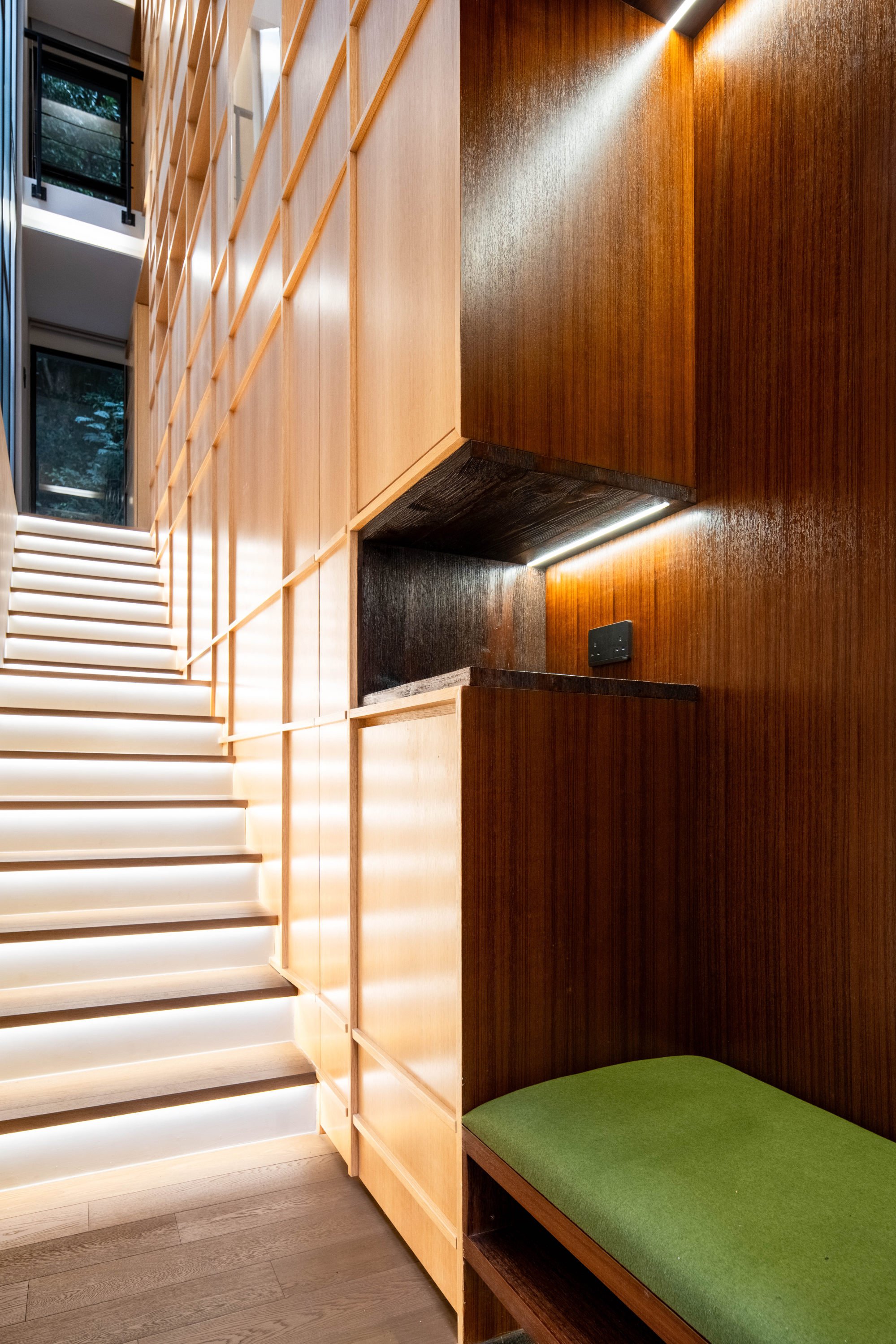
BREADstudio recently completed its second such village house in Tai Wai.
Even though the area is quite small, there are a lot of different places for friends to sit comfortably and have a conversation
His core requirements: one bedroom, room to host parties and, like the first house, the potential to rent out the ground floor.
To that end, the architects gave the ground-floor unit two doors, one opening to the street, the other accessed from a side alley. A separate entrance, also at ground level, serves the rest of the house.
Typically, in a village house the living area is separate from the staircase, which Mui regards as underused space. Here, the architects made it the heart of the home, looping the landings around each floor to integrate with the interior.
The addition of timber boards atop the concrete treads removes any purely utilitarian aesthetic, blending beautifully with the surrounding blond wood walls and built-in shelving and cabinetry.
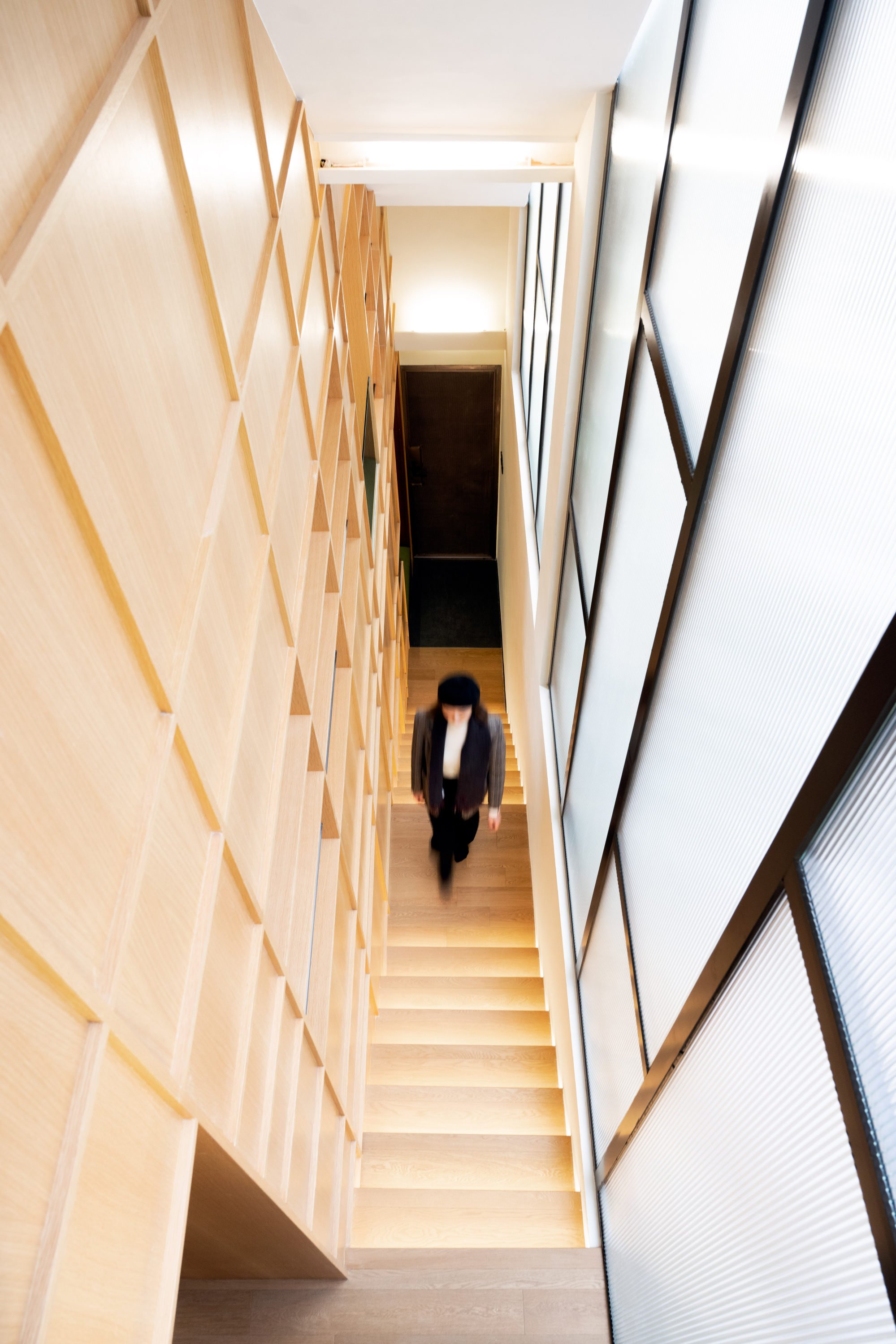
The aim, apart from visual appeal, is to expand the usable social space when guests visit. A sunken floor in the living area also serves this purpose – as does the decision to have a double-height ceiling in the living area, sacrificing the potential for a second bedroom on the floor above.
“Even though the area is quite small, there are a lot of different places for friends to sit comfortably and have a conversation: by the balcony, on the staircase, or looking down from the open, loft-style bedroom, without the need for chairs,” says Mui.
Extra-tall, bi-fold doors open completely to the balcony, expanding the space outdoors. Overhead, a rooftop skylight that bathes the home in sunlight by day transforms into a starry canopy at night. A semi-open kitchen and bathroom complete the first floor.
Ascending the staircase, fluted glass on the alley-adjacent boundary wall turns an otherwise dark passageway into a cheerful light well.

To help keep a house with so much glazing energy efficient and at a comfortable temperature year-round, the staircase is designed as a chimney into which hot air is naturally drawn, to be emitted outside via a rooftop extraction fan.
Roller blinds have also been installed on the windows and skylights, in addition to blackout curtains along the bedroom railing.
The White House, with a 596 sq ft footprint, is one of about 15 recently completed houses in the village.
But its value runs much deeper, he reckons, in terms of liveability and future prospects.
My clients wanted more divisions, as is traditional in Hong Kong. In fact, the more you divide the rooms, the less space you have
On the outlying island of Peng Chau, the Glass House came about through a business relationship between Korean designer Jae Hyun Lim and a local building contractor.
As with the White House, this building complied with regulations specifying concrete construction, Lim says, adding that its glass components are not structural.
Lim, director at JHL Lab, was living on the island during an eight-year residency in Hong Kong when he was engaged to design a multi-generational family house. It would comprise three floors measuring about 645 sq ft each, plus a rooftop.

Discovering to his delight that his client was “interested in trying out new ideas”, Lim pooled inspiration from various Hong Kong buildings he had admired.
This included the city’s vernacular utilitarian structures, particularly the rubbish disposal station in Discovery Bay, and the Fife Street electrical substation in Mong Kok.
Although the shared narrow alleyway on one side was a bonus, allowing for ventilation through windows, the house faced the street directly, presenting privacy challenges. And the site orientation, compounded by tightly packed neighbouring buildings, allowed for little natural sunlight.
Lim’s initial solution was to eliminate traditional solid building surfaces and instead envelop the exterior in translucent glass.
There is very little design [in this house], only structure. I don’t know if it’s beautiful, but at least it’s honest
For this he used channel glass, a system composed of structurally extruded C-shaped glass planks initially developed as a commercial material for when evenly diffused light and privacy are needed, framed by a concrete shell.
With two structural walls running the length of the house, utility areas such as corridors, bathrooms and kitchens were pushed to the outer edge of the building envelope, improving circulation and optimising floor space.
Lim’s preference for keeping the first floor open plan took some convincing, especially when it came to the main family kitchen. (In the client’s mother’s domain on the ground floor, a second kitchen sits alongside the helper’s room.)
“My clients wanted more divisions, as is traditional in Hong Kong,” says Lim. “In fact, the more you divide the rooms, the less space you have. Having fewer rooms gives you more flexibility.”
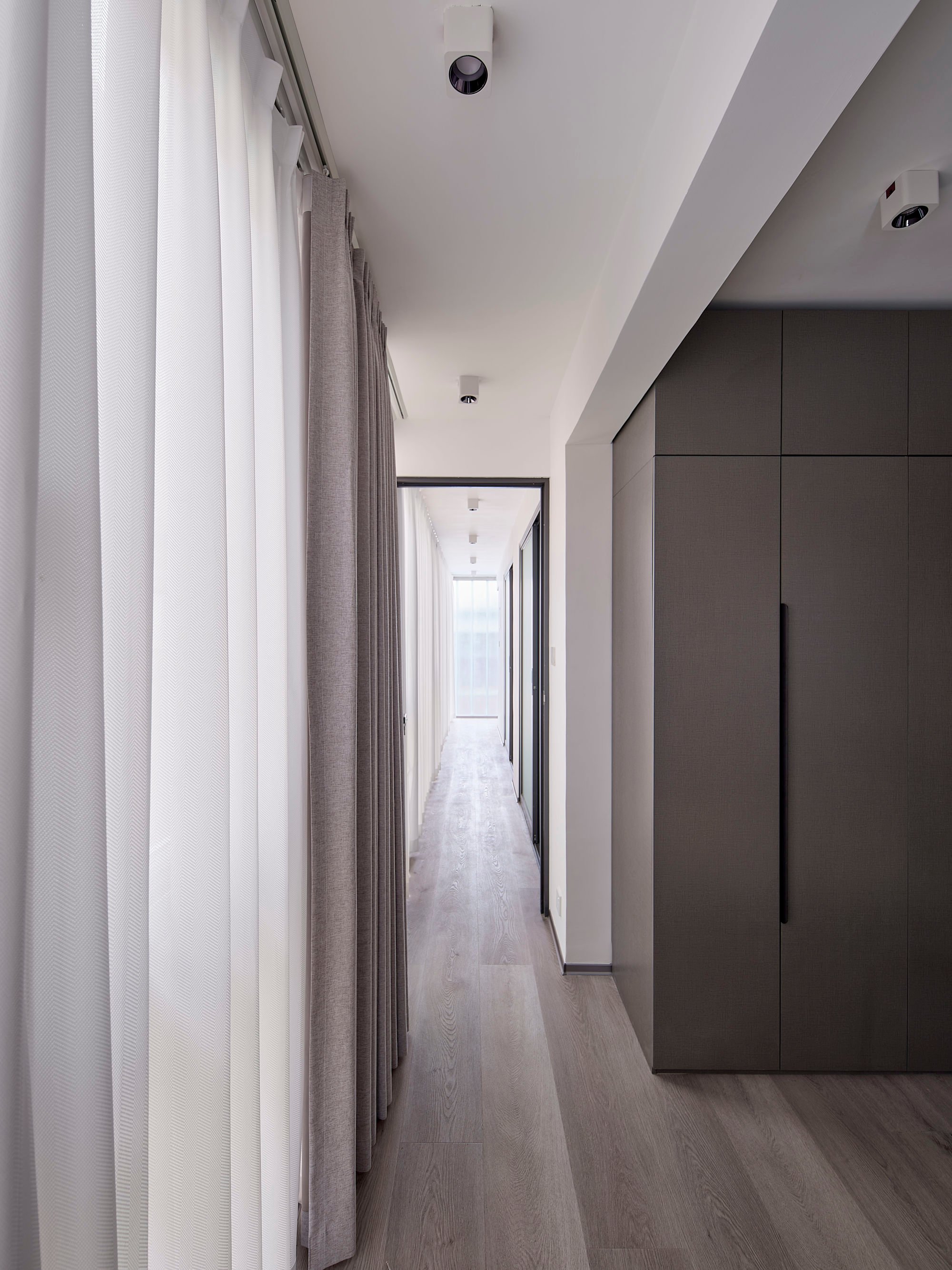
The long corridor connecting the three family bedrooms on the second floor was a hit with the client’s young children, who love to run along it.
To minimise the scale and scope of the overall construction, materials were kept to a minimum: mainly concrete for the structure, channel glass for the exterior, and steel for the staircase – the latter proving to be one of the most challenging parts of the build.
“The typical stair core in a village house is heavy and dark, with little light and air circulation since it is made of concrete. Naturally, we wanted to avoid this,” says Lim. “We decided to install a steel staircase to let in more light and air.

“The construction challenge, however, was that it had to be made in pieces and shipped to Peng Chau first, then lifted and welded on site.”
With light and air sorted, there was still the issue of a view – or lack thereof.
At the back of the property is a rock retaining wall flecked with greenery that Lim realised “could be a view”, so he placed the largest windows there, capturing an interesting outlook from every floor.
“There is very little design [in this house], only structure,” Lim proudly notes. “I don’t know if it’s beautiful, but at least it’s honest.”

White House exterior view
BREADstudio designed the White House, in Tai Wai, for a bachelor, who wanted only one bedroom but ample space for parties and the potential for tenants on the ground floor.
Living area
In this village house the staircase is an important part of the living area, providing extra social space for guests, who can also be seated on the periphery of the sunken floor or above, in the open, loft bedroom.
Living area detail
The living area’s double-height ceiling allows extended built-in shelving beside the staircase, which loops around the landings of each floor.
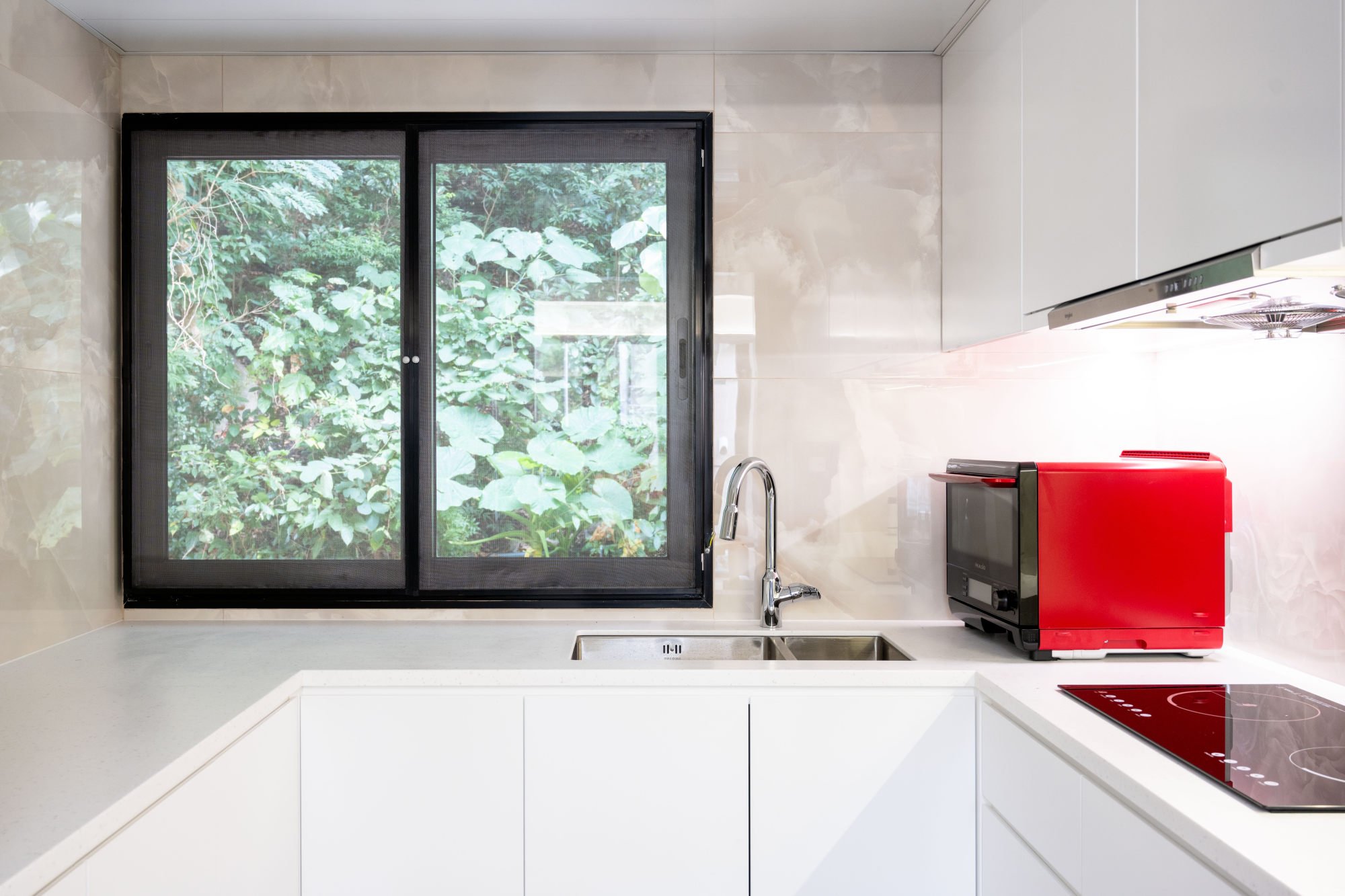
Entrance
The main part of the house has a separate entrance from the ground-floor unit, and is served by artificial and natural light, which comes through a skylight and the fluted-glass wall along one side of the staircase.
Kitchen
The partially open kitchen at the back of the first floor segues into a dining area, which extends into the sunken living room.

Glass House exterior view
The Glass House in Peng Chau was designed to provide privacy and much-needed light, previously lacking in the crowded site.
Kitchen
The main family kitchen, on the first floor, is open plan because, designer Jae Hyun Lim says, “Having fewer rooms gives you more flexibility.”
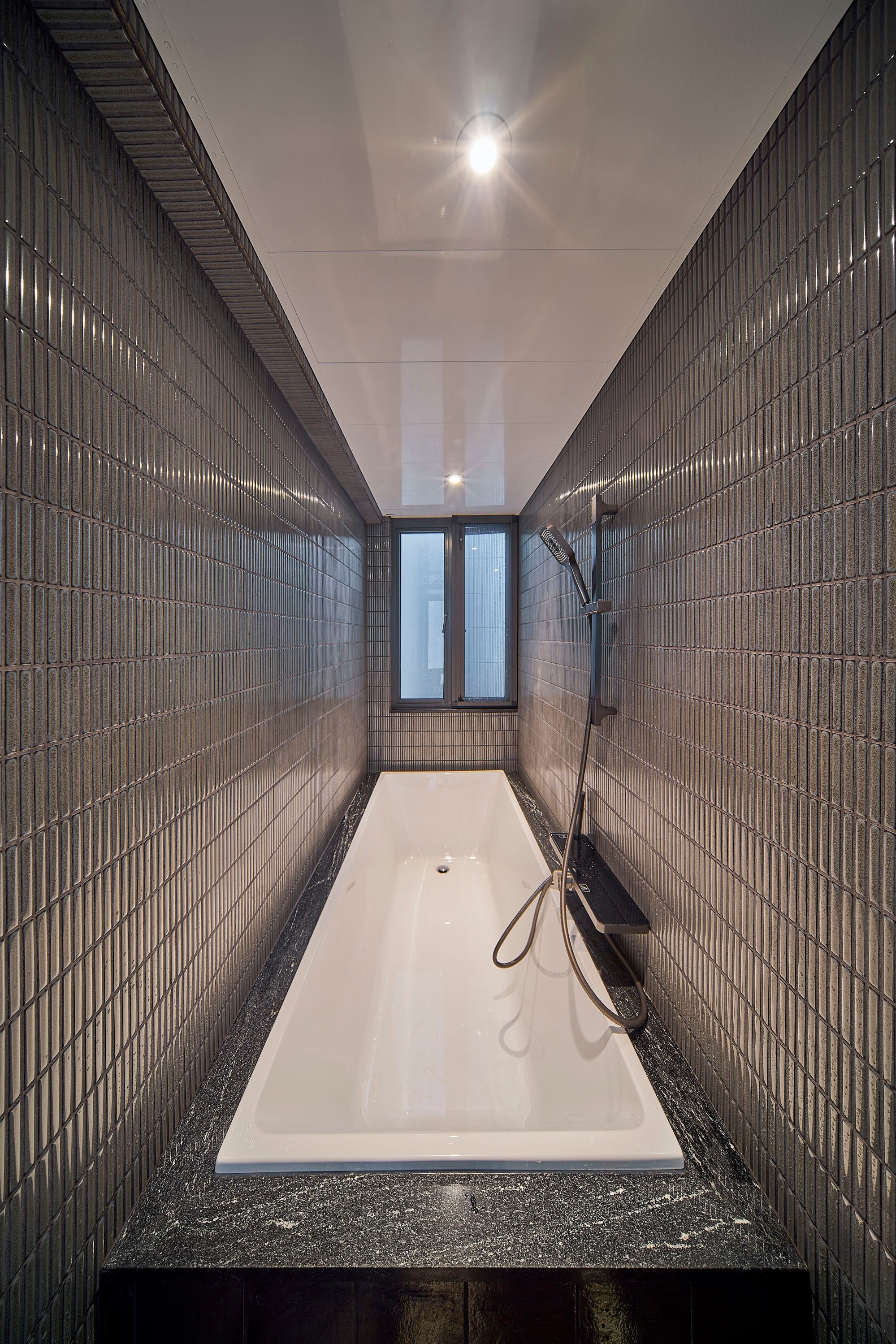
Staircase
The steel staircase was made in sections, then shipped to Peng Chau and welded together on site.
Bathroom
The bathtub takes up the entire width of a narrow en suite bathroom on the second floor. The toilet faces it on the opposite side.

